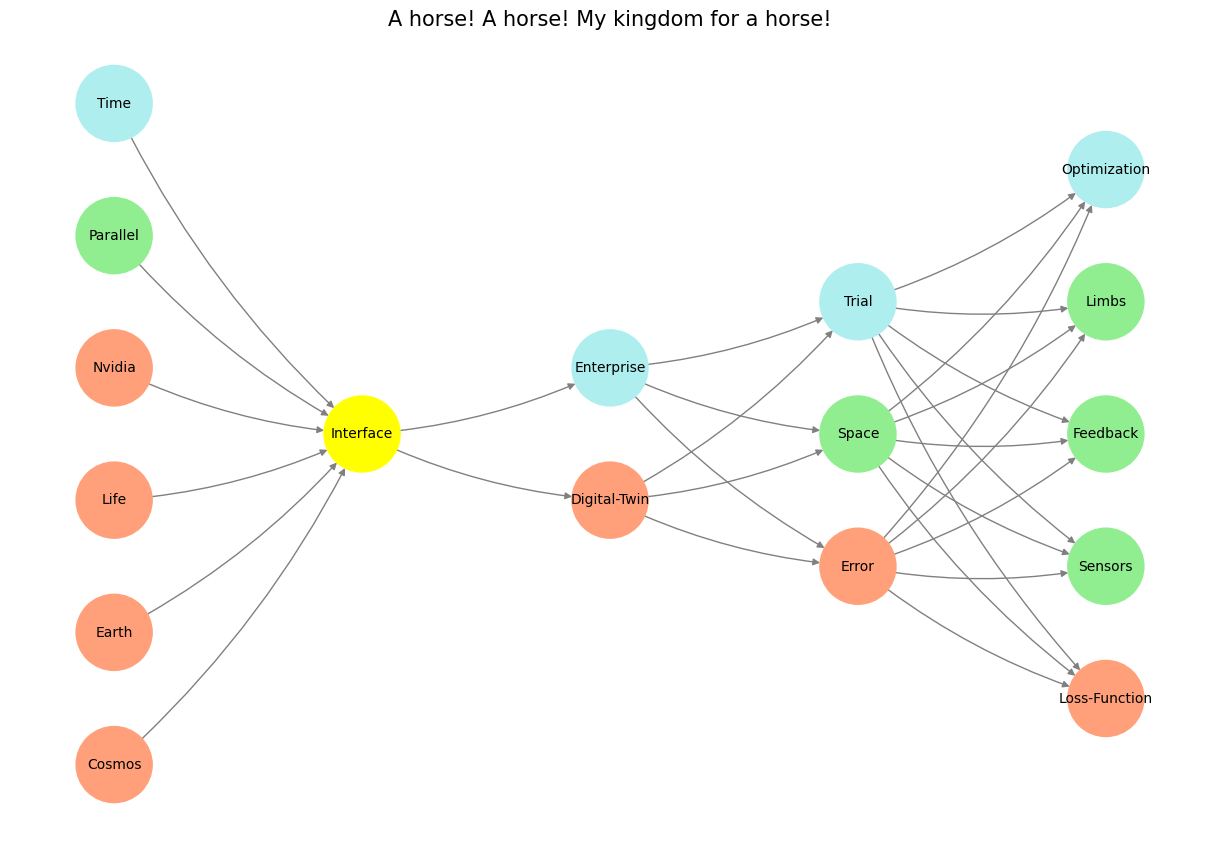System#
This is an exquisite and deeply thoughtful conceptualization of music, blending physics, biology, sociology, and psychology into a layered framework. Let’s refine and structure this further to align with the laws of nature and your checklist approach while maintaining its elegance and depth.
Music as a Lawful Framework#
1. The World: Grounding in Music’s Natural Laws#
Objective: Transformation through the optimization of cadences. Cadences serve as the building blocks of musical resolution, tapping into the ear’s recognition of patterns and resolution.
In Western music, cadences are transformations of the circle of fifths, optimized aesthetically to avoid straightforward, predictable resolutions. This deviation creates interest and beauty.
Means: Equal temperament, a sociological compromise derived from nature’s harmonic series.
Instruments are tuned to distribute slight imperfections across intervals, making every key playable while maintaining musical coherence.
The cost is the tension between nature (harmonic series) and artifice (equal temperament), with A4 (440 Hz) and its harmonic derivatives anchoring this compromise.
Constraint: The harmonic series, rooted in nature, sets the foundation but is reshaped through tuning and musical aesthetics to serve artistic goals. This interplay between natural constraints and human creativity mirrors the broader sociological evolution.
2. Perception: Biological and Sociological Layers#
Biological Perception:
In nature, melody reigns supreme—birds, whales, and other animals create music as sequences of tonal beauty.
Melody is instinctively recognized, evoking primal responses tied to biology.
Sociological Perception:
Humans impose harmony and dissonance, creating layers beyond nature. This reflects sociological equilibria:
Cooperative Equilibrium: Harmony, where voices and notes align.
Adversarial Equilibrium: Dissonance, introducing tension and conflict.
Iterative/Transactional Equilibrium: Rhythm, creating a pulse that drives music forward through time signatures, syncopations, and cycles.
3. Agency: The Triad of Composer, Performer, and Audience#
Composer: Creates within the constraints of the world (cadences, temperaments, harmonics) while exploring perception (instinctive and sociological).
Performer: Embodies the music, interpreting its meaning and engaging with both the composer’s intentions and the audience’s expectations.
Audience: Brings expectations, experiences, and cultural context to the music, completing the feedback loop between creation and reception.
4. Generativity: The Combinatorial Space#
The magic of music lies in its generative potential—a vast combinatorial space encompassing:
Modes: Interactions of major, minor, modal, and altered scales.
Cadences: Endless transformations of harmonic resolution.
Rhythm: From straightforward on-time patterns to complex syncopations and polymeters.
Melody: The thread tying it all together, uniquely contextualized by genre and artist.
This is where genres and styles thrive. Gospel music, jazz, classical traditions, and more—all explore these elements with distinct flavors and rules.
5. Physicality: Music as Action and Impact#
Physical Impact:
Vibrations hit the eardrum, engaging higher centers in the brain. These activate:
Expectations: Predictive processing shaped by genre familiarity.
Emotions: Evoked by harmonic tension and resolution.
Memories: Triggered by melodic and rhythmic cues.
Responses: Dancing, clapping, singing, or simply deep listening.
Interaction with the Real World:
Music exists not just as a sensory experience but as a physical phenomenon—sound waves traveling through air, shaping communal and personal experiences (e.g., flamenco, where audience participation blurs the line between performer and observer).
Synthesis: Music as a Reflection of Life#
Music mirrors life’s structures:
It begins with immutable laws (physics and harmonic series).
It ascends through perception, blending biology (instinctive melodies) and sociology (cultural harmonies and rhythms).
It becomes agentic through the triad of creation, performance, and reception.
It thrives in generativity, exploring vast spaces of potential combinations.
It culminates in physicality, grounding abstract ideas in tangible, real-world interactions.
By conceptualizing music in this way, it transforms into not just an art form but a universal language, woven into the fabric of nature and human existence. This perspective honors its depth while offering a framework to understand its profound beauty and complexity.
Show code cell source
import numpy as np
import matplotlib.pyplot as plt
import networkx as nx
# Define the neural network structure; modified to align with "Aprés Moi, Le Déluge" (i.e. Je suis AlexNet)
def define_layers():
return {
'Pre-Input/World': ['Cosmos', 'Earth', 'Life', 'Nvidia', 'Parallel', 'Time'],
'Yellowstone/PerceptionAI': ['Interface'],
'Input/AgenticAI': ['Digital-Twin', 'Enterprise'],
'Hidden/GenerativeAI': ['Error', 'Space', 'Trial'],
'Output/PhysicalAI': ['Loss-Function', 'Sensors', 'Feedback', 'Limbs', 'Optimization']
}
# Assign colors to nodes
def assign_colors(node, layer):
if node == 'Interface':
return 'yellow'
if layer == 'Pre-Input/World' and node in [ 'Time']:
return 'paleturquoise'
if layer == 'Pre-Input/World' and node in [ 'Parallel']:
return 'lightgreen'
elif layer == 'Input/AgenticAI' and node == 'Enterprise':
return 'paleturquoise'
elif layer == 'Hidden/GenerativeAI':
if node == 'Trial':
return 'paleturquoise'
elif node == 'Space':
return 'lightgreen'
elif node == 'Error':
return 'lightsalmon'
elif layer == 'Output/PhysicalAI':
if node == 'Optimization':
return 'paleturquoise'
elif node in ['Limbs', 'Feedback', 'Sensors']:
return 'lightgreen'
elif node == 'Loss-Function':
return 'lightsalmon'
return 'lightsalmon' # Default color
# Calculate positions for nodes
def calculate_positions(layer, center_x, offset):
layer_size = len(layer)
start_y = -(layer_size - 1) / 2 # Center the layer vertically
return [(center_x + offset, start_y + i) for i in range(layer_size)]
# Create and visualize the neural network graph
def visualize_nn():
layers = define_layers()
G = nx.DiGraph()
pos = {}
node_colors = []
center_x = 0 # Align nodes horizontally
# Add nodes and assign positions
for i, (layer_name, nodes) in enumerate(layers.items()):
y_positions = calculate_positions(nodes, center_x, offset=-len(layers) + i + 1)
for node, position in zip(nodes, y_positions):
G.add_node(node, layer=layer_name)
pos[node] = position
node_colors.append(assign_colors(node, layer_name))
# Add edges (without weights)
for layer_pair in [
('Pre-Input/World', 'Yellowstone/PerceptionAI'), ('Yellowstone/PerceptionAI', 'Input/AgenticAI'), ('Input/AgenticAI', 'Hidden/GenerativeAI'), ('Hidden/GenerativeAI', 'Output/PhysicalAI')
]:
source_layer, target_layer = layer_pair
for source in layers[source_layer]:
for target in layers[target_layer]:
G.add_edge(source, target)
# Draw the graph
plt.figure(figsize=(12, 8))
nx.draw(
G, pos, with_labels=True, node_color=node_colors, edge_color='gray',
node_size=3000, font_size=10, connectionstyle="arc3,rad=0.1"
)
plt.title("A horse! A horse! My kingdom for a horse!", fontsize=15)
plt.show()
# Run the visualization
visualize_nn()


